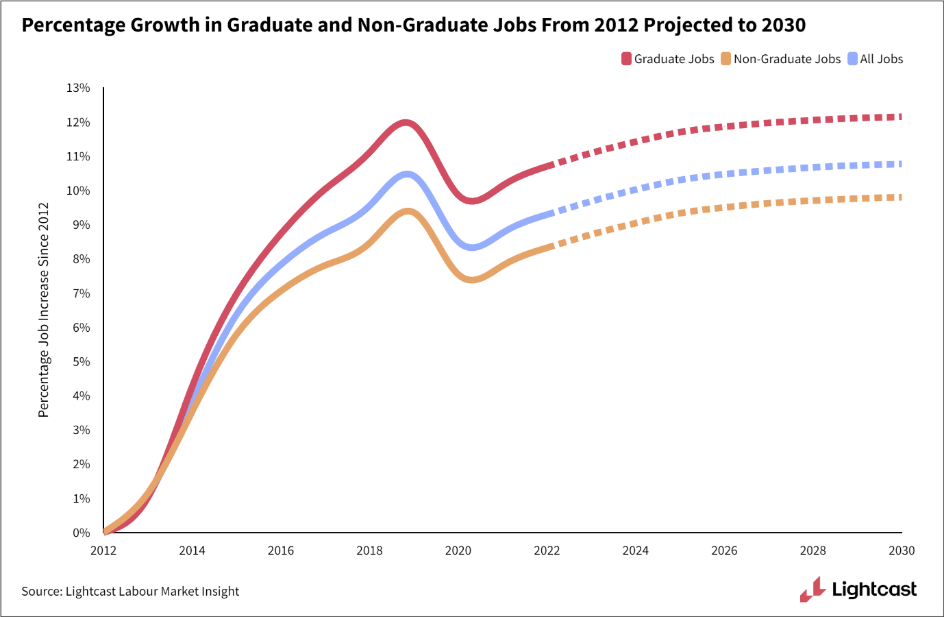What skills are most in demand?
Whereas the traditional focus of labour market demand for graduates has been on the qualifications they have, in recent years the language of employers has increasingly shifted to focus much more on skills. Universities have rightly invested in supporting 21st century skills development, and demand for these skills is almost ubiquitous across the labour market, but the differentiators that enable graduates to access different areas of the labour market are often specialised skills.
Utilising technology that enables us to parse millions of online job postings for their skills content, we have created a taxonomy built from over 30,000 skills terms employers use. This enables us to analyse the sorts of skills that are being requested for different occupations and job titles, and if we use this methodology to identify the specialised skills employers are looking for in graduate occupations over the past 12 months, what we find is a mix of quite different in-demand skills. For instance, the top ten includes skills like Marketing (around 488,000 job postings), Finance (430,000) and Nursing (236,000), but also a number of IT skills, such as SQL (275,000), JavaScript (249,000), and Python (228,000).
We can also look at how specialised skills demand has changed over the past five years, in order to give us a sense of which skills are growing and becoming more important in the graduate labour market. Here, we find the top skills dominated by IT and computing, with the likes of Kubernetes (820% increase in postings over five years), Power BI (465%), and Cyber Security (173%) all having seen strong growth. There are, however, a number of non-IT skills that have also seen strong growth in demand, such as Midwifery (228%), Psychology (98%), and Mental Health (98%).

